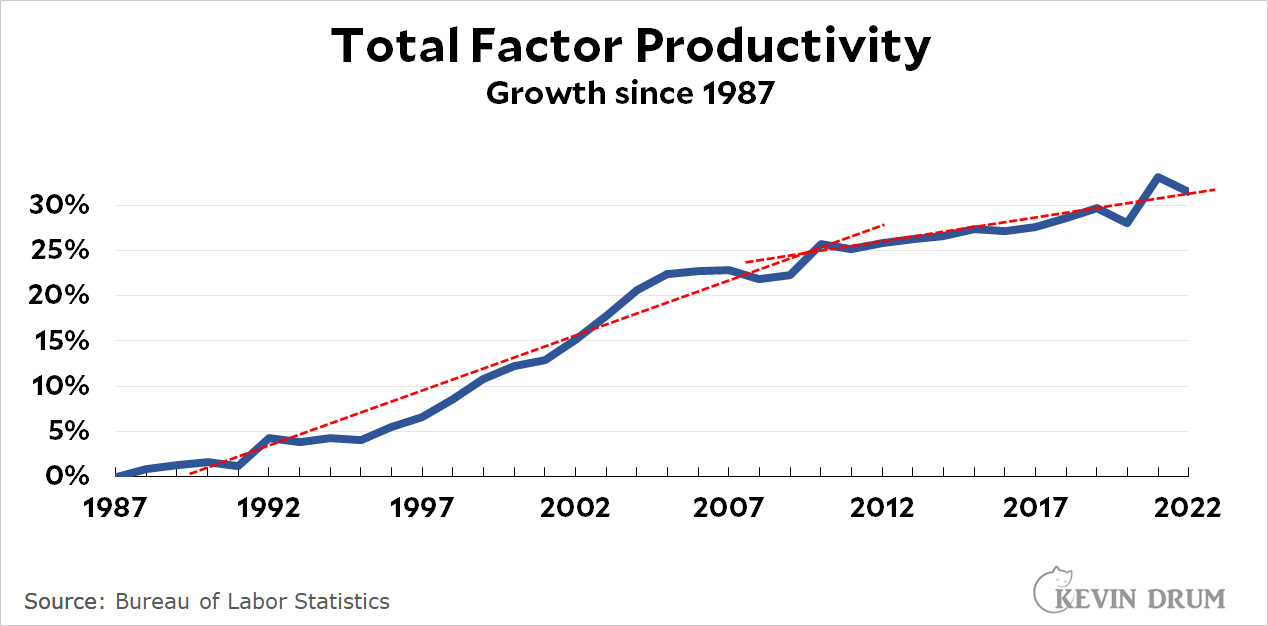Total factor productivity is productivity growth after you've accounted for labor and capital. Roughly speaking, it's the share of productivity growth due to technological improvements:
 TFP took a big jump in 2021 but then dropped in 2022. It is now back to its (sort of lousy) recent trendline.
TFP took a big jump in 2021 but then dropped in 2022. It is now back to its (sort of lousy) recent trendline.

I wonder how much of this measurement is impacted by the Baumol effect: it is difficult for a massage therapist or a concert pianist to increase their productivity using technology. As more people move from manufacturing to services, productivity is impacted.
https://en.wikipedia.org/wiki/Baumol_effect
chrome-extension://efaidnbmnnnibpcajpcglclefindmkaj/https://stats.bls.gov/opub/mlr/1984/04/art2full.pdf
Google paid 99 dollars an hour on the internet. Everything I did was basic Οnline w0rk from comfort at hΟme for 5-7 hours per day that I g0t from this office I f0und over the web and they paid me 100 dollars each hour. For more details
visit this article... https://createmaxwealth.blogspot.com
I'd like to see the chart with a longer time frame and shifted trendlnies. The growth from 1995 to 2005 seems like it might be one trendline, and the growth from 2005 to now another trendline. It's hard to tell what happens pre-1995. Looks like it might be about the same rate of growth as post 2005.
In 2008/2009, the first smartphones made their way into the market. People were enthralled with free apps, including one that would encourage you to properly make popcorn.
The combination of lean management and bloated integrated accounting software complicates performing transactions, usually by requiring approvals from disinterested managers who delay and/or obstruct processes in the business cycle, has slowed down the increases of productivity IT originally created for the workplace. Staff now spend more time making charts and attending meetings to explain the value they are adding to goods and services to the bosses than they do adding that value.